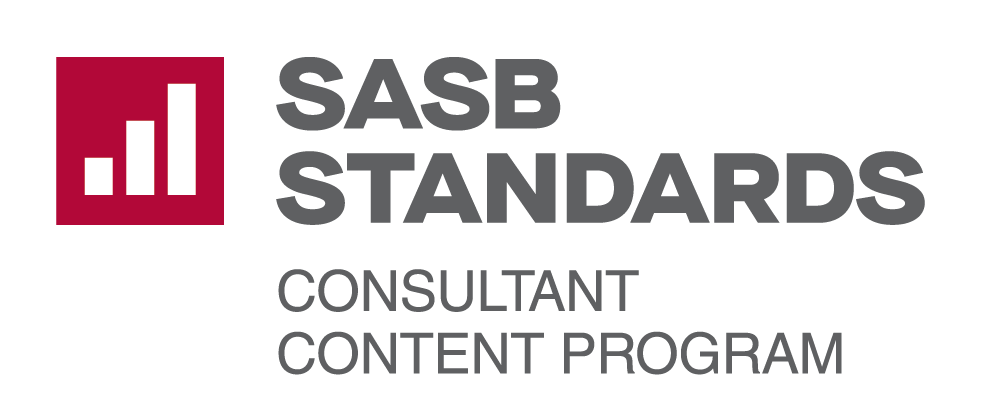The road to sustainability is different for many businesses. Factors such as industry, company size, and ultimately the end goal play a role in the path organization’s take. For those that want to pursue a net-zero status, there are a number of steps to get there. The net-zero principle means that you reduce as many carbon emissions as possible and then negate the remaining emissions that can’t be eliminated by removing carbon from the atmosphere. It’s a years-long process that can feel daunting at first glance, so we’ve broken it down into a digestible eight step roadmap for this important sustainability journey.
Step 1: Measure Your Carbon Footprint
Understanding your total impact on the environment is the first step to making changes. A comprehensive carbon assessment accounts for all emissions created by your business.
First, look at your scope emissions. As a refresher, there are three.
Scope 1: Company vehicles; fuel combustion; fugitive (unintentional) emissions.
Scope 2: Purchased electricity; heat and steam.
Scope 3: Purchased goods and services; business travel; employee commuting; waste disposal; investments; leased assets/franchises; transportation and distribution.
Once this is all calculated, you can identify the primary sources of your emissions in order to create an informed plan of action.
Step 2: Set Your Science Based Target Reduction Goals
Since the late 1800s planet Earth has warmed by 1.1 degrees celsius. In response, The Paris Agreement (the international treaty on climate change) proposed net-zero goals to cap that temperature rise to a maximum of 1.5 degrees celsius. It’s an ambitious plan which will entail global emissions being reduced by 45% by 2030, and then a global net-zero status to ultimately be achieved by 2050.
At COP26, the most recent U.N. climate conference, the Science Based Target Initiative (SBTi) was created to establish and monitor net-zero standards and criteria. When a company decides they want to pursue net-zero status, they need to set science-based targets that align with the 1.5 degree temperate cap.
Here’s one example of what setting a science-based target may look like: Your organization sets the goal of being net-zero by 2050. To accomplish this you might retroactively look back to a base year of, say, 2014. After running a climate model, you can determine the percentage of reductions needed to prevent the 1.5 degree warming, and then you would commit to reducing scope 1, 2 and 3 emissions from that base year by specific percentages by 2023.
Step 3: Engage with Executives, Employees, and Your Supply Chain to Ensure There is Buy-In for Your Ambitious Goals
The adage “it takes a village” may seem cliche but in actuality is pretty spot-on. A complete overhaul of certain business practices doesn’t happen overnight, and cooperation is key. By engaging with your stakeholders, you foster a sense of partnership and lead by example as an organization.
Step 4: Classify Your Emission Sources from Easy-to-Reduce to Hard-to-Reduce
Once you’ve taken stock of your emission sources you should categorize them into the following groups:
1) Easy-to-Reduce Emissions: These are outputs your company would cut entirely out of the organization’s structure within a year, like removing food waste through composting, or going paperless.
2) Medium-Difficulty Emissions: These might take longer to fully cut out, such as excess electricity usage.
3) Hard-to-Decarbonize Emissions: These are emissions that a company is unable to reduce or eliminate without serious financial reprecussions. For example, it is much harder for an airline company to reduce significant emissions solely based on their business model. Upgraded technology can and will eventually help, but it will take large investments.
Step 5: Disclose and Publish Your Specific Roadmap to Net Zero
Make sure to publish your science-based targets reduction goals and your plan to achieve them! This information should be easy to find and digest on your company website. Sharing updates on your sustainability achievements, continuously engages employees and customers along the way.
Step 6: Start Reducing Emissions
Now that you’ve categorized your emissions into easy, medium, and hard categories (and published your action plan) you can start to implement your strategies.
Easy-to-reduce emissions will be the most straightforward. When you get to the medium difficulty category, the road splits and there are different paths you can take.
One option is to source renewable energy by putting solar panels onsite or sourcing community solar power depending on what’s available in your area. Another option is purchasing renewable energy directly from a utility company. You can work with your provider to select a plan which allows for that.
An alternate option will take you down the path of renewable energy credits, also known as renewable energy certificates (REC). One REC equates to one megawatt-hour (MWh) or renewable electricity unit. Once the renewable energy reaches the grid, RECs transfer the renewable aspects to a new owner. It’s important to note that if you purchase RECs, you’re not actively reducing your scope 2 emissions, you’re offsetting them instead.
Step 7: Purchase Offsets For Hard To Decarbonize Emission Sources
There are a variety of reasons why certain emission sources can be hard to reduce. Chemicals, cement, and steel are generally considered the top three industries that have a difficulty eliminating emissions. There are technical factors like the need to process emissions of carbon dioxide and use very high heat.
Transportation can also get complicated. Aviation accounts for roughly 3% of the world’s CO2 emissions, and certain business trips can’t be avoided. While progress is being made to find long term solutions, this sector continues to hit bureaucratic and technical roadblocks. Then there’s long-haul trucking, a form of transportation which is admittedly difficult to electrify.
Purchasing offsets is a way to take action against these unavoidable emission sources for your business.
Acceptable offsets in the pursuit of net-zero include:
Mature (at least 10-years-old) tree-planting. Trees use carbon dioxide to build roots, trunks, branches, and leaves. Therefore trees are natural carbon absorbers and clean the air. Trees are also an important part of the natural carbon cycle.
Sophisticated carbon removal technology. There are two acceptable methodologies here:
1) Bioenergy with carbon capture and storage (BECCs). This involves burning plant biomass for energy and then trapping the CO2 that’s produced.
2) Direct Air Capture (CAC). This method uses chemical reactions to separate and capture CO2 from the air around us. Chemicals selectively react to remove CO2 and allow remaining gasses (nitrogen and oxygen) to pass through.
Step 8: Assess and Update Your Progress Towards Achieving Your Goals Quarterly or Annually (Depending on Company Preference and Goals)
By actively providing updates on your progress, achievements, and yes difficulties, you are fostering a sense of transparency, honesty, and accountability. It keeps the work on track when there are some inevitable potholes. It keeps the conversation going. Ultimately, it keeps the wheels turning for you, your organization, and the planet.










